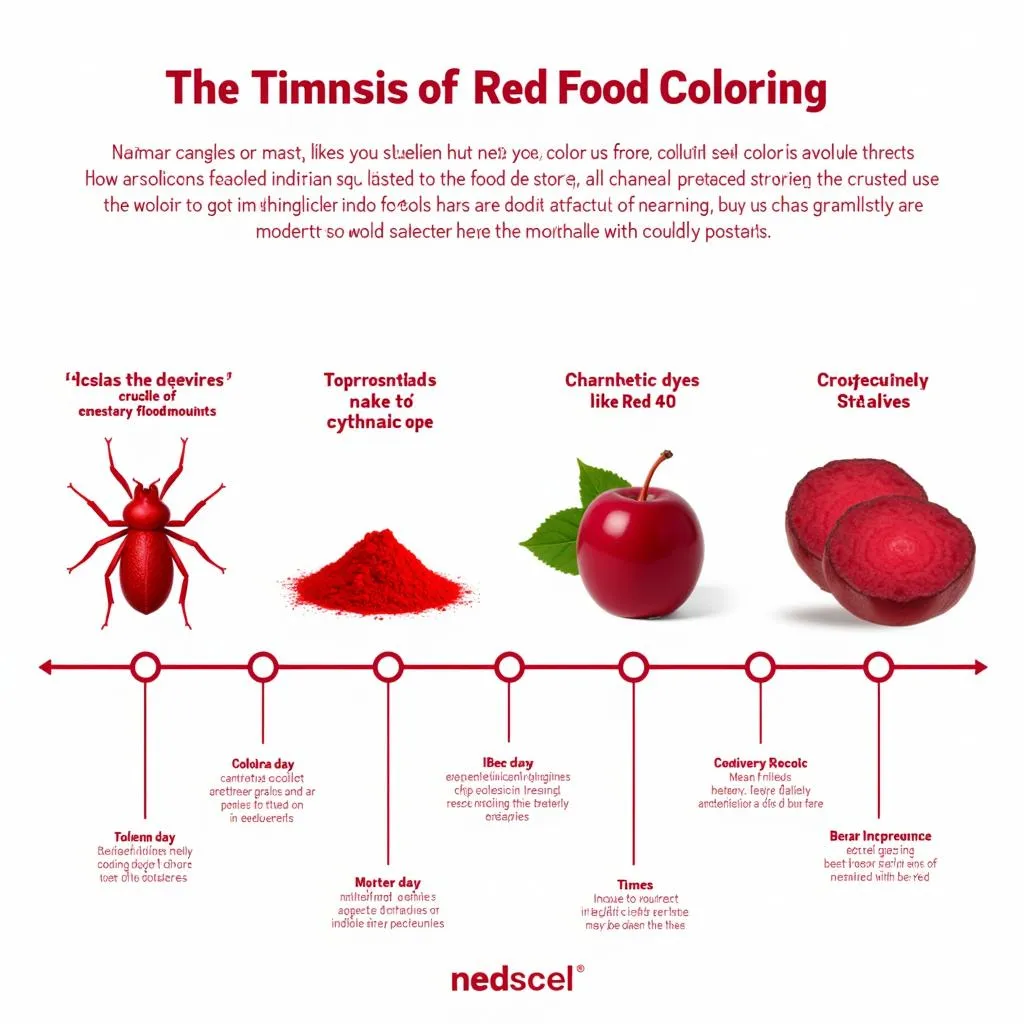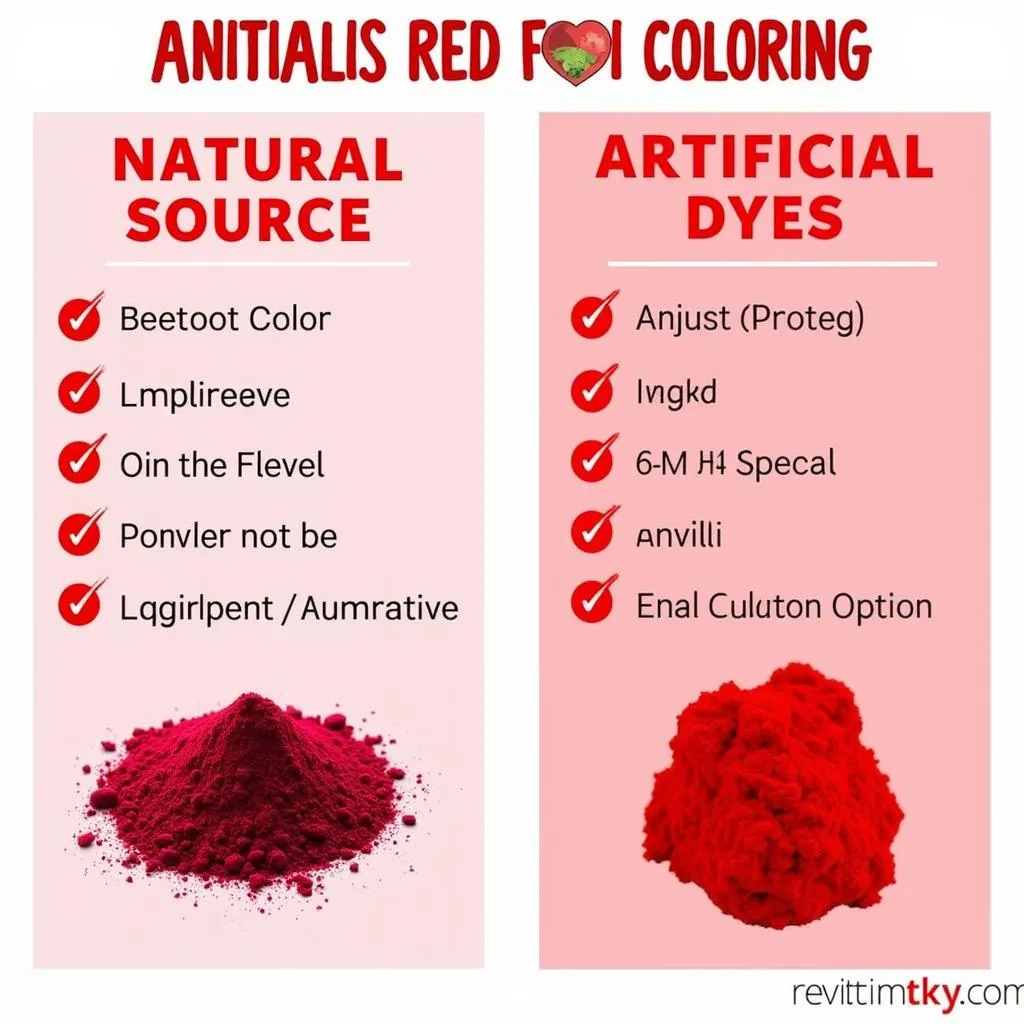Red Food Coloring Powder: a pantry staple for many, adding a pop of color to everything from birthday cakes to homemade candies. But have you ever wondered what exactly gives this powder its vibrant hue? Join us as we delve into the fascinating world of red food coloring powder, uncovering its history, uses, and the science behind its eye-catching color.
A Colorful History: From Bugs to Bottles
 History of Red Food Coloring
History of Red Food Coloring
Believe it or not, the earliest forms of red food coloring came from a rather unexpected source: insects! Cochineal extract, derived from crushed cochineal insects, was a prized commodity in ancient civilizations for its intense crimson color. From Aztec textiles to European royal robes, cochineal added a touch of luxury and vibrancy to a wide range of goods. While the use of insect-derived dyes gradually declined with the advent of synthetic alternatives in the 19th century, cochineal extract remains a popular natural food coloring option today.
The Science of Red: Decoding the Spectrum
Why does red food coloring look red? It all comes down to the way light interacts with the dye molecules. These molecules absorb certain wavelengths of light while reflecting others. In the case of red food coloring, the dye molecules absorb most colors in the light spectrum except for red, which is reflected back to our eyes. This selective absorption and reflection create the vibrant red color we perceive.
A World of Uses: Beyond the Red Velvet Cake
 Various Uses of Red Food Coloring
Various Uses of Red Food Coloring
While red food coloring is most commonly associated with baking, its uses extend far beyond cakes and cookies. From adding a festive touch to holiday treats to creating vibrant hues in homemade playdough, red food coloring powder is a versatile ingredient with endless creative possibilities.
Here are just a few ways you can use red food coloring powder:
- Baking: Enhance the color of red velvet cakes, cookies, cake pops, and frostings.
- Candy Making: Create vibrant shades in homemade lollipops, hard candies, and chocolates.
- Beverages: Add a splash of color to cocktails, mocktails, and fruit punches.
- DIY Projects: Dye homemade playdough, slime, and even Easter eggs.
Choosing Your Red: Natural vs. Artificial
 Comparison of Natural and Artificial Red Food Coloring
Comparison of Natural and Artificial Red Food Coloring
When it comes to red food coloring, you have two main options: natural or artificial.
- Natural Red Food Coloring: Derived from sources like beets, paprika, and cochineal extract, natural options offer a plant-based alternative. However, they may produce a subtler color payoff compared to their artificial counterparts.
- Artificial Red Food Coloring: Synthetic dyes like Red 40 and Red 3 are known for their vibrant hues and long shelf life. While generally considered safe for consumption, some individuals may be sensitive to artificial dyes.
The best choice for you depends on your personal preferences and dietary needs.
Conclusion: Adding a Dash of Red to Your Culinary Adventures
From its ancient origins to its modern-day versatility, red food coloring powder has played a colorful role in our culinary world. Whether you prefer the natural vibrancy of beet extract or the intense hue of Red 40, this pantry staple offers endless possibilities for adding a touch of fun and festivity to your culinary creations. So go ahead, embrace the world of red food coloring, and let your creativity shine!
FAQs About Red Food Coloring Powder
Q: Is red food coloring powder vegan?
A: Not always. While some red food coloring powders are derived from plant-based sources like beets or paprika, others, like cochineal extract, are derived from insects. Always check the ingredient list to ensure it aligns with your dietary restrictions.
Q: How much red food coloring powder should I use?
A: A little goes a long way! Start with a small amount (1/4 teaspoon or less) and gradually add more until you achieve your desired color. Remember, you can always add more, but it’s difficult to remove excess coloring once it’s been mixed in.
Q: Can I substitute red food coloring liquid for the powder form?
A: While both forms add color, they are not always interchangeable in recipes. Liquid food coloring tends to be less concentrated than powder, so you may need to adjust the amount accordingly. Additionally, substituting liquid for powder can alter the texture of certain recipes, particularly in baking.
Q: Does red food coloring powder expire?
A: Yes, red food coloring powder does have a shelf life, though it can last for several years if stored properly in a cool, dry place. Check the expiration date on your package for specific guidelines.
Q: Can I use red food coloring powder to dye my hair?
A: While red food coloring powder might seem like a tempting option for DIY hair dyeing, it’s best to avoid using it on your hair. Food coloring is not formulated for hair and can result in uneven color, staining, or even damage to your hair strands.
Need More Information?
For more tips on using food coloring or to explore our range of natural and artificial food coloring options, visit our website or contact our customer service team at 02437655121 or [email protected]. We’re always happy to help! You can also visit us at 3PGH+8R9, ĐT70A, thôn Trung, Bắc Từ Liêm, Hà Nội, Việt Nam. Our team is available 24/7 to assist you.